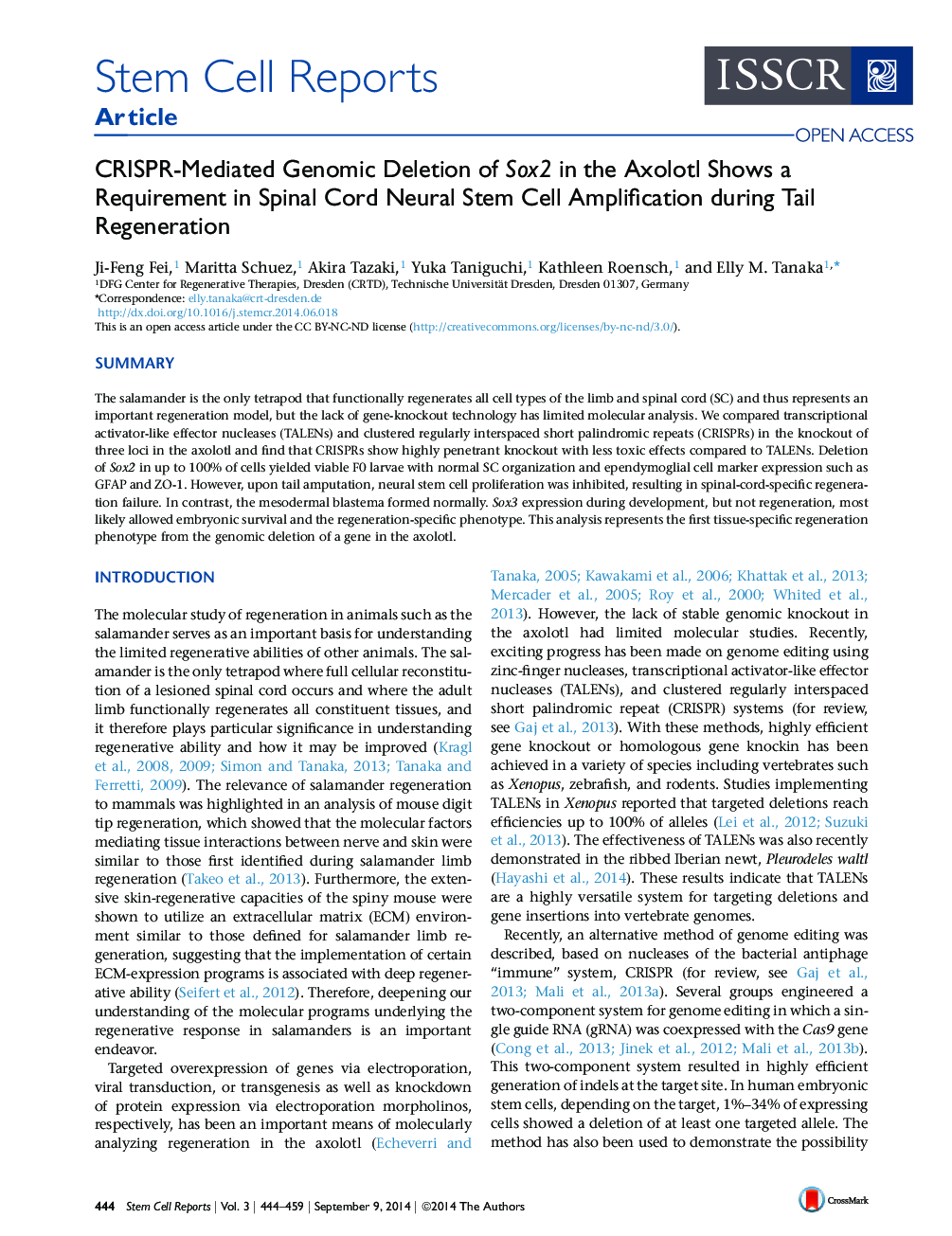| کد مقاله | کد نشریه | سال انتشار | مقاله انگلیسی | نسخه تمام متن |
|---|---|---|---|---|
| 2093347 | 1081954 | 2014 | 16 صفحه PDF | دانلود رایگان |

• CRISPRs yield more efficient and effective gene knockout than TALENs in axolotls
• Sox2-CRISPR axolotl larvae have a normal spinal cord but show a regeneration phenotype
• There is a lack of neural stem cell expansion during regeneration in Sox2-CRISPR axolotls
SummaryThe salamander is the only tetrapod that functionally regenerates all cell types of the limb and spinal cord (SC) and thus represents an important regeneration model, but the lack of gene-knockout technology has limited molecular analysis. We compared transcriptional activator-like effector nucleases (TALENs) and clustered regularly interspaced short palindromic repeats (CRISPRs) in the knockout of three loci in the axolotl and find that CRISPRs show highly penetrant knockout with less toxic effects compared to TALENs. Deletion of Sox2 in up to 100% of cells yielded viable F0 larvae with normal SC organization and ependymoglial cell marker expression such as GFAP and ZO-1. However, upon tail amputation, neural stem cell proliferation was inhibited, resulting in spinal-cord-specific regeneration failure. In contrast, the mesodermal blastema formed normally. Sox3 expression during development, but not regeneration, most likely allowed embryonic survival and the regeneration-specific phenotype. This analysis represents the first tissue-specific regeneration phenotype from the genomic deletion of a gene in the axolotl.
Graphical AbstractFigure optionsDownload as PowerPoint slide
Journal: - Volume 3, Issue 3, 9 September 2014, Pages 444–459